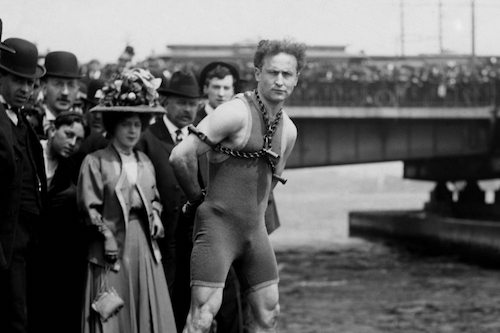Note from Senior Managing Editor Christina Grieves: As Alexander Green has written many times, diversification – although not the most exciting investment approach – is the key to building a long-term portfolio that can survive the inevitable market hiccups.
That’s why The Oxford Club recommends you start with a properly allocated long-term core portfolio. Then you can begin adding other assets, like short-term targeted trades, which you’d find in Alex’s Oxford Microcap Trader.
In his latest interview, Alex discusses the strategy behind his microcap trading research service and reveals a $5 stock that’s growing at an incredible rate. Click here to watch.
A reader recently told me he had skipped my advice about diversifying his portfolio with high-grade bonds, high-yield bonds and inflation-protected Treasurys (or TIPS).
“They don’t yield very much,” he said. “I can get a better return in your recommended stocks.”
Indeed, he can.
However, I’ve been dealing with individual investors since 1985, when I first started in the money management industry.
Along the way I discovered that not 1 person in 10 deals effectively with the emotions that arise when a fully invested portfolio suddenly takes a heart-stopping dive.
The biggest risk is not what you imagine. It’s what you don’t see coming.
Take the death of Harry Houdini…
Houdini, who lived from 1874 to 1926, remains the world’s best-known escape artist and stunt performer. Some refer to him as “America’s First Superhero.”
Here are just a few of his famous escape acts:
- He was chained inside a packing crate submerged in New York’s East River and weighed down by 200 pounds of lead. (He escaped in 57 seconds.)
- He was strapped in a straitjacket and sealed inside a coffin 6 feet underground. (He escaped. But the first time he tried his “buried alive” stunt, he was nearly asphyxiated.)
- With his feet locked in stocks, he was lowered upside down into a tank filled with water. An assistant stood by with an axe to break the glass if he couldn’t escape. (He did, of course.)
- After being shackled in leg-irons and handcuffs, he was sewn inside the carcass of a beached whale but still managed to escape. (However, he nearly suffocated on the arsenic fumes from the embalming chemicals.)
- The guards on Murderers’ Row – the south wing of Washington, D.C.’s Old Jail – handcuffed Houdini and locked him inside a cell. (He escaped within two minutes and used the remaining time in his act to switch eight prisoners locked in other cells.)
It’s no surprise that Houdini was often referred to as “The Master Mystifier.”
Indeed, his name quickly entered the lexicon. (Anyone at a meeting or party who vanishes is said to have “pulled a Houdini.”)
You might assume that his great escapes were fakery, illusions or sleight of hand.
Not so.
Houdini was incredibly strong and could hold his breath for several minutes. He was a great contortionist with an uncanny ability to twist and bend his body and dislocate his joints.
He once said, “To any young man who has in mind a career similar to mine, I would say: ‘First try bending over backward and picking up a pin with your teeth from the floor… That was my first stunt.'”
Since Houdini never died when shackled and buried underground or submerged upside down in a water torture cell, it’s natural to wonder what finally killed him.
That’s an odd story…
Houdini would often invite the biggest man in the audience to join him on stage.
He would then raise his shirt to reveal his bare skin and insist that the man punch him in the stomach as hard as he could.
To the astonishment of the audience, Houdini would weather the blow with no ill effects.
The onstage participant was not a shill. Houdini was an amateur boxer who had learned to flex his muscles to absorb the punch.
In 1926, however, a student who had just seen the show approached Houdini in his dressing room and slammed his fist into Houdini’s stomach without warning.
Houdini wasn’t ready. He doubled over in pain, his appendix ruptured. He died soon thereafter.
The biggest risk is what you don’t see coming.
Most of the biggest market-shaking events of the past 35 years were completely unexpected. The list includes…
- The stock market crash on October 19, 1987, when the Dow lost almost a quarter of its value in a single day.
- Saddam Hussein’s invasion of Kuwait in the summer of 1990, which led to a spike in oil prices, the first Gulf War and an immediate bear market.
- The collapse of Long-Term Capital Management – an enormous and highly leveraged hedge fund overseen by Nobel laureates – in 1998. (Then-Federal Reserve Chairman Alan Greenspan recruited 14 major financial institutions to help supervise its orderly liquidation to avoid a full-fledged panic.)
- The September 11 attacks.
- The sudden collapse of Bear Stearns and Lehman Brothers – two storied Wall Street banks – in 2008. That helped kick off the financial crisis.
- And, of course, the novel coronavirus that quickly turned into a worldwide pandemic.
Who predicted these extraordinary events? No one.
Who will predict the next one? No one.
That is why you diversify.
Not just to reduce your risk. But to protect the assets you’ve spent a lifetime accumulating from the next bolt out of the blue.
We can’t know what that will be or when it will occur. So diversify your portfolio.
Because – like Harry Houdini – you won’t see it coming.
Good investing,
Alex
Click here to watch Alex’s latest video update.

